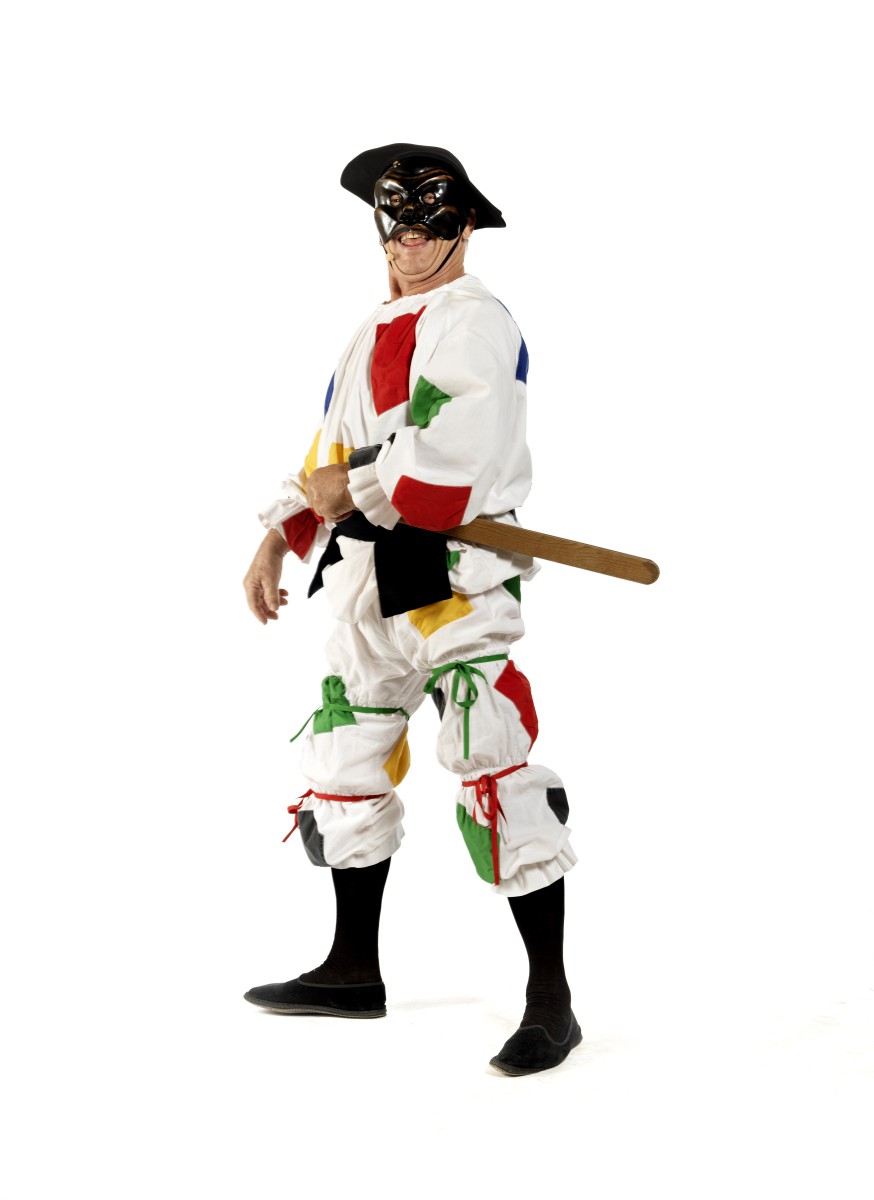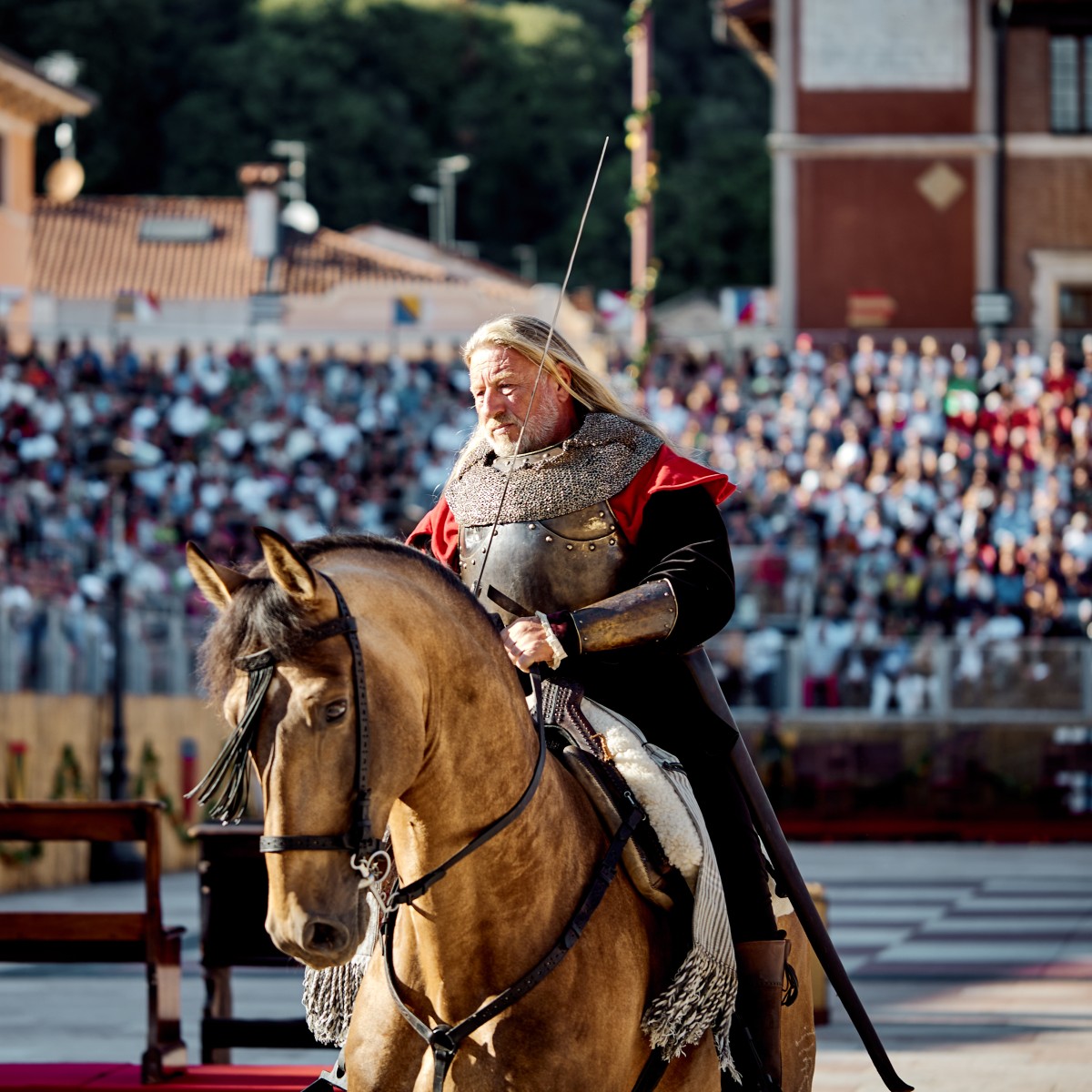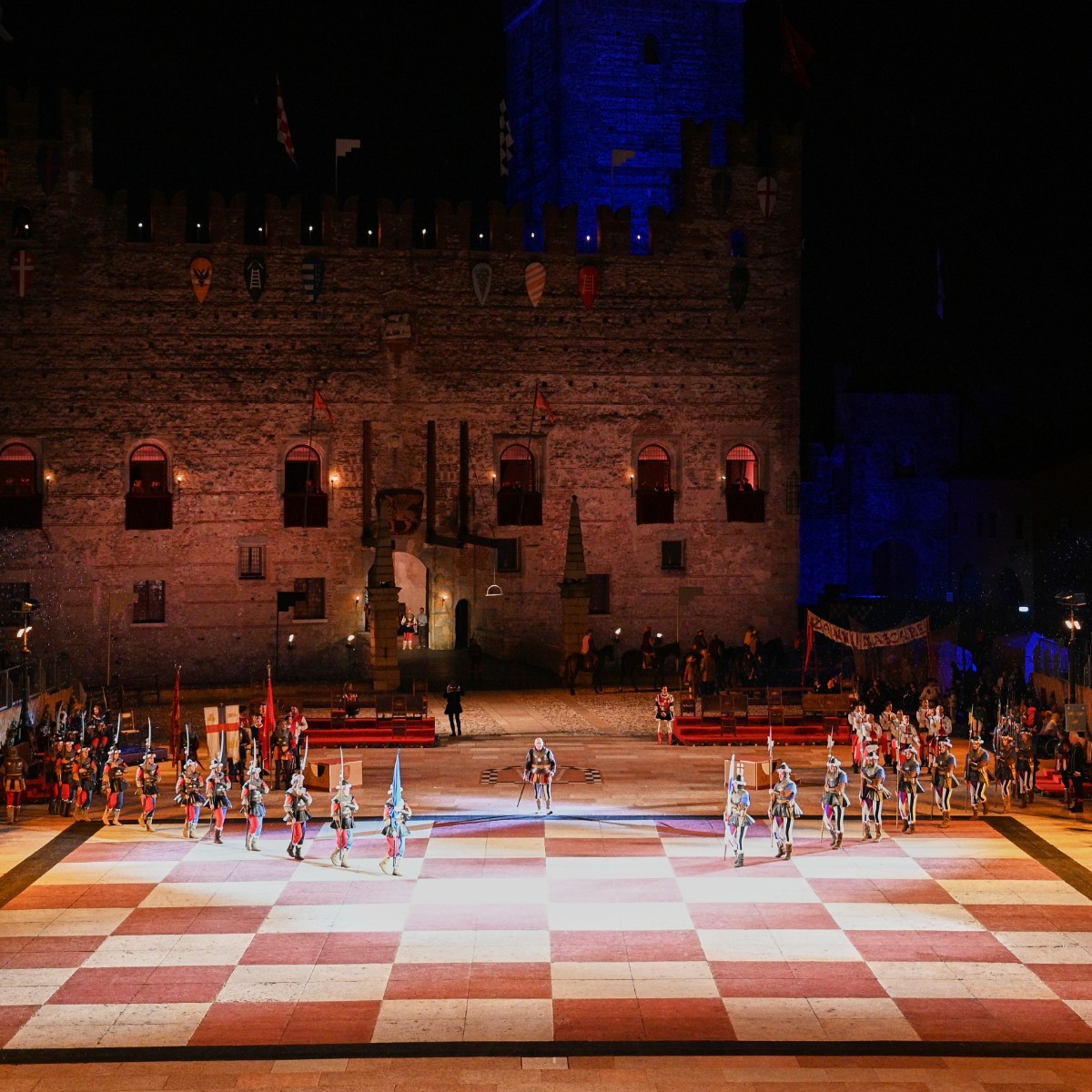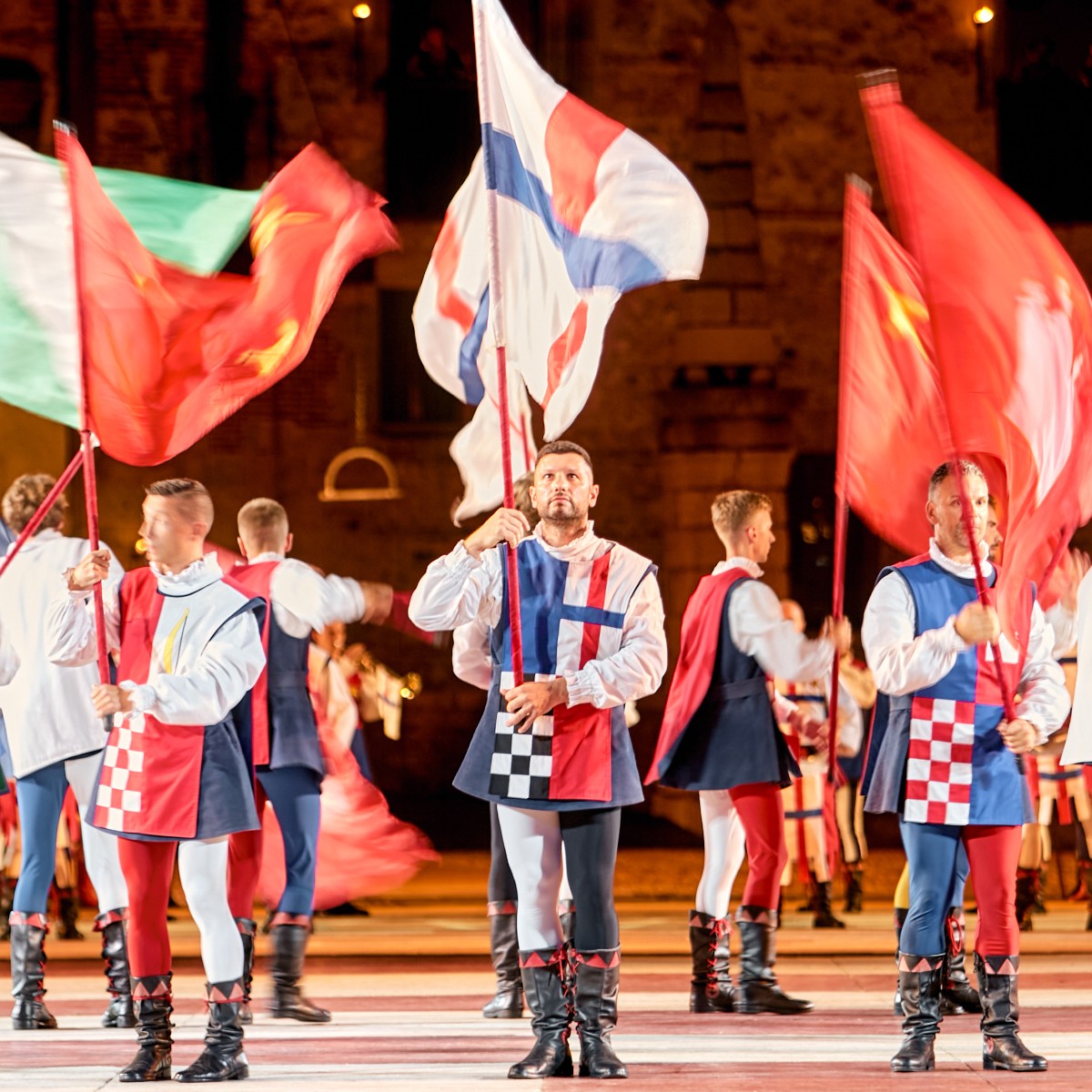The challenge
The gauntlet has been thrown down, and the noblemen Vieri da Vallonara and Rinaldo d’Angarano are ready to shed blood to secure the hand of the castellan’s daughter, the fair Lionora; but the governor has a solution up his sleeve designed to put an end to their rivalry for good. The stage is set; the living chess pieces are ready on the board. Lionora draws the colour of who shall make the first move: black or white. With a roar, the chariot with the ram’s head rolls into the square with the chessboard the challenge will be played out on. The Heralds take their place on the podium, ready for the moves of the players. The commander arrives bearing the chessboard, and prompts the two adversaries to play. Vieri and Rinaldo take their places at the table, and the world’s finest competition gets under way.

































